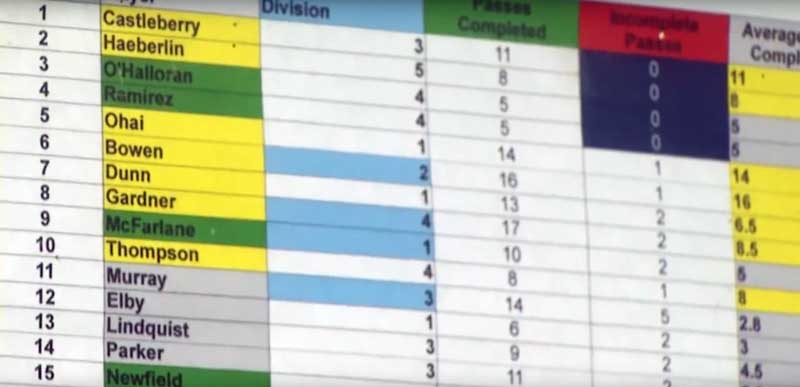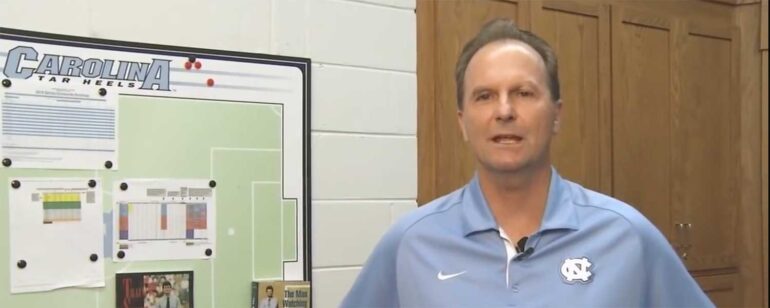When you think of University of North Carolina’s women’s soccer head coach Anson Dorrance, you immediately think of winning. Dorrance has been the only head coach the program has known since the team in the late 1970s. Along the way, the Tar Heels have won 21 NCAA national titles and one reason for the program’s success has been Dorrance’s ability to develop players in one of the most competitive environments in the NCAA.
In front of a packed lecture hall during the 2016 NSCAA Convention in Baltimore, Dorrance started his talk by explaining how he formed his methods through watching legendary North Carolina men’s basketball head coach Dean Smith run practices. Smith had his student managers track all of the players’ stats in every practice. At the end of each practice, the stats would be tallied up and the players with the best rankings would run fewer suicides. The players with the worst stats, as Dorrance said, “ran for weeks.”
But this idea of tracking stats in each practice is what spurred Dorrance to develop his own “Competitive Cauldron,” a way in which he could “value competition and promote it among his team.” This theory became a reality when Dorrance recruited a player early in his coaching career who was so competitive coming in as a freshman that he needed to find ways to motivate the rest of the team to rise to her level. That player’s name? April Heinrichs. Heinrichs would later be a member of the U.S. Women’s National Team that won the 1991 Women’s World Cup. It was a squad that Dorrance noted was, “not the best but most competitive.”
Over the years, Dorrance began to formulate metrics for the competitive environment his teams trained in to help measure what was absolutely necessary to have his team perform at the highest level. Different categories for ranking players include, but are not by any means limited to
- the player with the hardest shot,
- how quickly players maneuvered through dribbling exercises, and
- how far and how accurate players could hit a diagonal cross.

There are fitness elements to it as well: sprinting tests, agility tests, strength tests, and so on — and everything is ranked. After every practice, his managers, who tracking the training sessions, tally up the points and rank the players from first to last. The ranking list is then posted outside of the locker room. Every player knows where they stand on that day and what they need to do to perform better at the next training.
This is how Dorrance motivates players to be accountable for themselves and work hard in practice every day so they are prepared for games.
While you might think this is simply a numbers game for the physical and fitness tests, Dorrance uses the competitive atmosphere to help players condition themselves mentally. He tracks seasonal and personal bests as a tool to motivate players to never be satisfied by reaching a peak. It is, as Dorrance calls it, a “never-ending ascension.” Again, he stressed accountability — it’s up to the players to find the desire to become better soccer players as well as individuals.
Dorrance more than once stressed his main priority as a coach is to help his student-athletes become better people and not just better soccer players. For Dorrance, the most important development was in individual character. His rankings for development goals in order of importance are
- character,
- academic, and
- soccer.
He then explained how some of his former players, including U.S. Women’s National Team players Heather O’Reilly, Meghan Klingenberg, Tobin Heath, and so on, weren’t always at the top of the rankings during their freshman years. Those players found ways to motivate themselves to become better soccer players and by the end of their senior years, were at the top of nearly every category.
How and if Dorrance adapts his system in the years ahead will be interesting to watch. As opposed to years past, the national titles aren’t coming in succession as often. The team’s last title came in 2012 and since then, the Tar Heels have reached the quarterfinals once. Other teams, especially in the ACC, have adapted to play more possession-oriented soccer and are becoming better equipped to resist North Carolina’s high-pressing style. Dominance, though expected, is no longer guaranteed.

